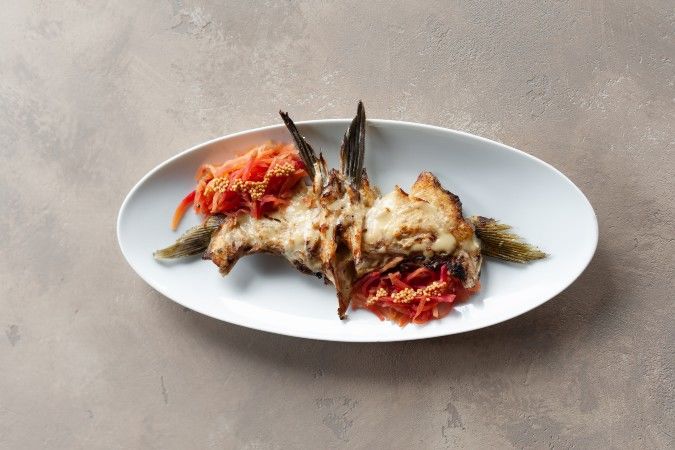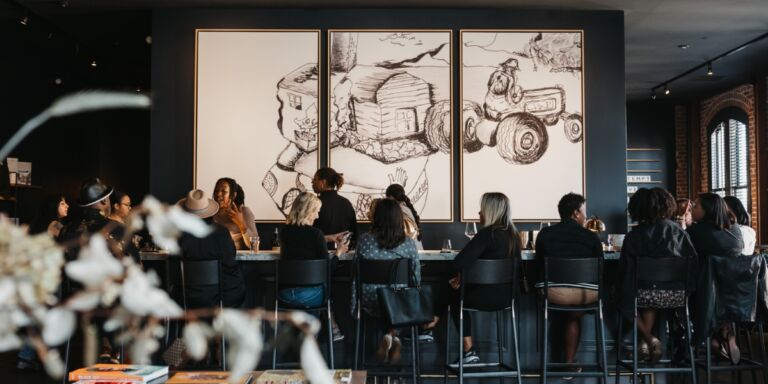In early April, as spring coyly peeked over the snowcapped Alps, I passed through Venice en route to Italy’s Prosecco region (to research a story that’s in the current issue of Club Oenologique magazine). On my way back I paused, because if Venice is, historically, a gateway – its immense power and wealth built on its position between East and West – it is also a marvel. Everybody stops here, as they always did, but now they come to gawk instead of trade.
This isn’t really progress. In the 16th century, Jan Morris’ superb book Venice tells us, when the Serene Republic was at war with the Turks, another brand-new fully-fledged warship left the city every morning for 100 days. But I was here to think not about war, nor about tourism, but about wine.

I had an invitation to stay at the JW Marriott, a hotel that takes up an entire small (16 hectare) island: it was once a hospital for respiratory diseases which, in the shadow of Covid, seemed appropriate. I could have just stayed put: there were olive trees and bicycles, an excellent spa and a friendly barman who made me a vast drink with rose gin from an elegant alembic, the glass sprinkled with rose petals. ‘I don’t know,’ I said, when he suggested it: ‘rose gin?’ I hate sweet cocktails. But he was right, there wasn’t a trace of sweetness.
He also assured me, despite being Venetian himself (‘200%!’), that Naples makes the best pizza in the world because of the minerals from Vesuvius in the flour. Maybe he was right about that, too. The hotel’s fine-dining restaurant wasn’t open, but the rooftop bistro had views towards the main island, a 20-minute boat ride away, and its sommelier Simone took me on a vinous tour of Italy, including Nova Serra, a sage and apricot Greco di Tufo by Mastroberardino, in Campania – so, quite possibly, a recipient of the same mineral benefits as Naples’ pizza.

Venice traded wine, of course: in her heyday, Venice traded everything. But arguably, the Republic’s greatest influence on my field was not the contents but the receptacle. I went to Murano, another islet, where the glassblowers were installed to prevent the spread of both fires and trade secrets. The few remaining craftsmen no longer risk having their eyes gouged out as punishment for indiscretion, but the furnaces still reach 1,200 degrees – and the delicate process of breathing volume into the molten glass then coaxing it into shape still requires years of attention and practice. ‘There is no school, just 25 years of mistakes!’ laughed Massimiliano Schiavon, a sixth-generation glassblower who has switched from craft to art.

He is clearly making a fortune – Jeff Bezos apparently bought a table football set from him, entirely in glass – and his skill and dedication are undeniable: there he was, on a Sunday, swinging that pipe, conjuring brightly coloured vases out of what is, essentially, melted sand.
I loved his story about getting into trouble as a teenager for sneaking into the family studio without permission: he was betrayed by the oils his fingers had left on his eagle-eyed father’s scissors. It’s good to recall, in our Covid era, that even the vessels that hold our wine were once given form by human breath. But his showroom, with its vastly expensive tchotchkes, made me sad. The most beautiful items in it were a delicate set of Art Deco glasses, made long ago by Massimiliano’s father. They weren’t for sale.
For Venice to produce something worth drinking would seem nearly as great a feat as building the city in the first place
I took comfort from Morris, who assures us that Murano glass has always been ‘perfectly hideous’ and tells a story of a visiting 15th-century Emperor secretly paying his jester to bump the table, smashing the vast glass dinner service he had been gifted. But, after visiting a lace shop on the island of Burano, and hearing how one of the last authentic lacemakers died recently, aged 103, it was a relief to walk along the canal, past the pretty painted houses, and cross a bridge to Mazzorbo, where the Bisol family, who have been producing Prosecco since Venice was fighting the Turks, have created a vineyard in the shadow of a 13th-century belltower – the remaining relic of an ancient monastery – and revived an indigenous variety.

I had known Venice had vineyards – I’d hoped to visit San Michele, an island cemetery (Igor Stravinsky and Ezra Pound are buried there) that also, slightly disconcertingly, makes wine, but that proved impossible. And yet: a place that has fought so hard for land that it may yet sink; a city on the sea that has always lacked fresh water… the Veneto is famous for its wine, but for Venice to produce something worth drinking would seem nearly as great a feat as building the city in the first place.

Venissa is a two-hectare estate surrounded by a wall that was rebuilt in 1727 but first constructed in the fifth century. There were once vineyards all over the lagoon, and many even survived the great freeze of 1929, when temperatures reached minus 40 degrees and you could walk to Murano from Venice. But 1966 was worse: a ten-day flood, the vines deprived of oxygen and destroyed by salt. In the early 2000s, Gianluca Bisol spotted three vines on Torcello, one of the oldest island settlements, and started conducting research. They turned out to be Dorona, an indigenous variety adapted to these salty, clay-sand soils.

Now, the vines grow alongside vegetables which go into the lovely dishes in their Michelin-starred restaurant. Long macerations in concrete make for an oxidative style; there are two whites, confusingly called Venusa and Venissa. The latter is the finer wine, packaged in a beautiful 50cl bottle with a gold-leaf label, handmade by the last goldbeater in Venice (there used to be 300 of them). It’s perfumed, with the slightly funky note of an orange wine (which I suppose, in a sense, it is); the 2016 had a hazelnut flavour and a delicate strawberry finish, the 2014 a pleasing note of candied ginger. There isn’t, of course, very much of either: up to 5,000 bottles of each, depending on the year.

Lunch was wonderful. They serve nothing they can’t raise or catch themselves and so, for now, no meat – but the dogfish (from the lagoon) had an almost meaty, grilled-wood flavour and worked well with the blend of Merlot and Cabernet Sauvignon that grows on Santa Cristina, a private island owned by Swarovski.

Are these wines more than curios – another tourist’s delight, mined from past glories like gold hammered into a pretty label? I think they are. What could possibly speak more of regeneration than vines thriving in salty soil, reaching skywards in imitation of Venice’s second-oldest church tower, still standing beside them? Perhaps other wines and other possibilities will blossom in their wake. Far stranger things have occurred here, and the city itself is proof.
Nina Caplan was a guest of JW Marriott Venice









